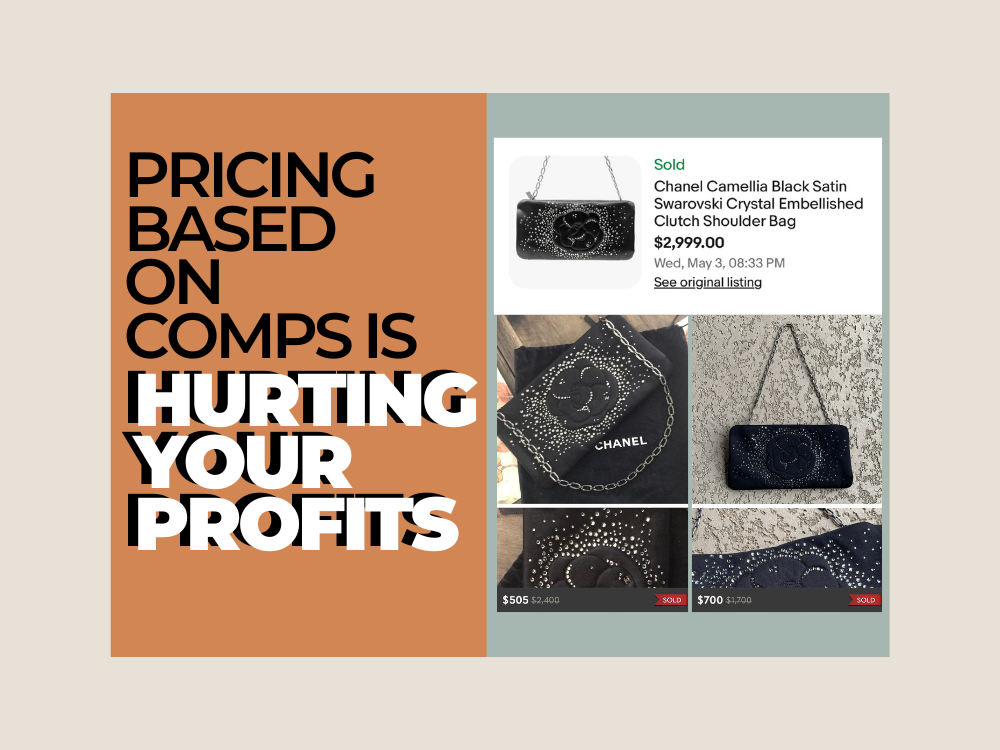
Stop Pricing Based on Comps — and Start Boosting Your Resale Profits
Comps aren’t gospel. In fact, if you're relying on them to price your Poshmark or eBay listings, you're probably leaving profit on the table.
This is Lesson 3 in my resale pricing strategy series — and it's a big one.
✅ TL;DR: Why You Shouldn’t Rely on Comps Alone
🧠 Comps don’t reflect supply, demand, or seller motivation
💸 Many comps are based on bad pricing decisions (or decluttering goals)
📈 To price for profit, you need a strategy that accounts for market gaps, brand value, and buyer demand
🚫 The Comp Trap: Why Most Resellers Undervalue Their Items
Comps = “comparable sales” — or what a similar item recently sold for.
Sounds helpful, right?
Not always.
Let’s be clear: those sales didn’t happen in your shop. You don’t know if the seller accepted a low offer out of urgency, confusion, or just Marie Kondo’d their closet.
🛑 Real Example: The $745 Manolos Sold for $150
Seller: Stay-at-home mom
Motivation: Clearing space after daughter’s wedding
Outcome: Accepts first offer for $150
You: Use that comp and price yours at $160… and lose $200 in profit
Do you see the problem?
Why Comps ≠ Market Value
Comps ignore:
🛍️ Brand perception
📉 Demand in your size/style
📦 Packaging, condition, seasonality
💡 Market saturation (or lack of it)
If your item is the only one listed, you hold leverage. But if you blindly follow comps, you lose that advantage.
🔑 A Smarter Reseller Pricing Strategy
1. Start With Market Value, Not Just Sold Listings
Ask yourself:
Is this brand trending right now?
Are other resellers underpricing out of desperation?
How many similar listings are active?
2. Use Supply & Demand in Your Favor
No competition = price power.
Too much supply = time to differentiate (with photos, bundles, or a better title).
3. Let Comps Be a Clue — Not the Rule
Comps are useful for sourcing and ballpark pricing — not for setting your final number. Think of them as the floor, not the ceiling.
🧠 Reminder: You Are Not the Clearance Bin
Your inventory deserves thoughtful pricing.
💡 When you price based on:
True demand
Market gaps
Brand power
Item condition
You take back control — and profits follow.
✉️ Want More Smart Reseller Strategy Like This?
Join my free newsletter for:
Smart tips that actually move inventory
Strategies to flip smarter — not harder
Insights from real-life six-figure reselling data
👉 Click here to subscribe and level up your pricing strategy
